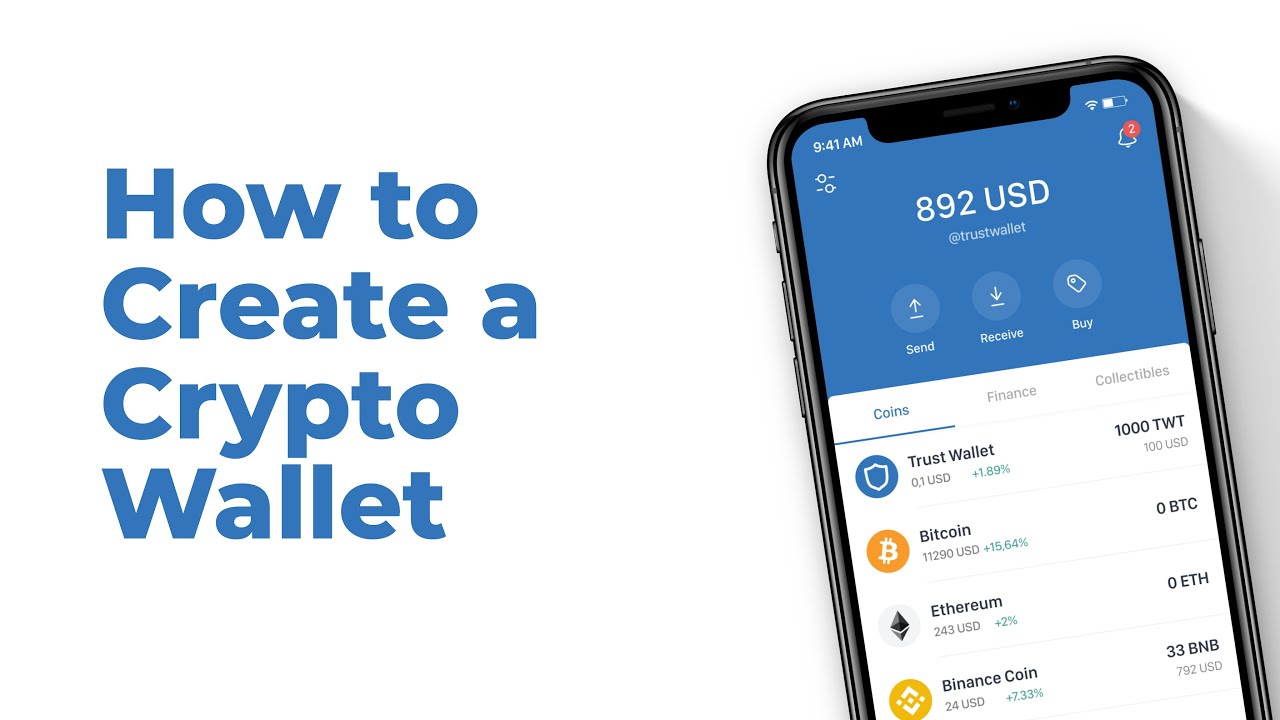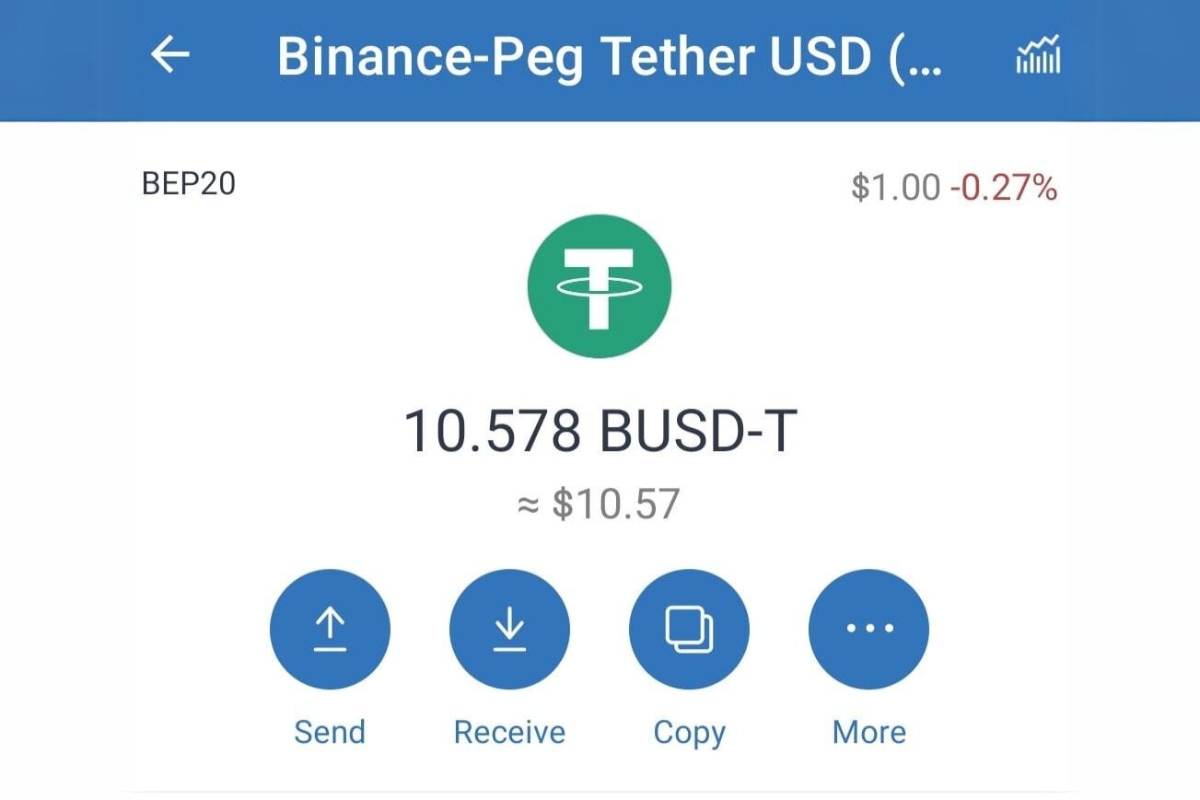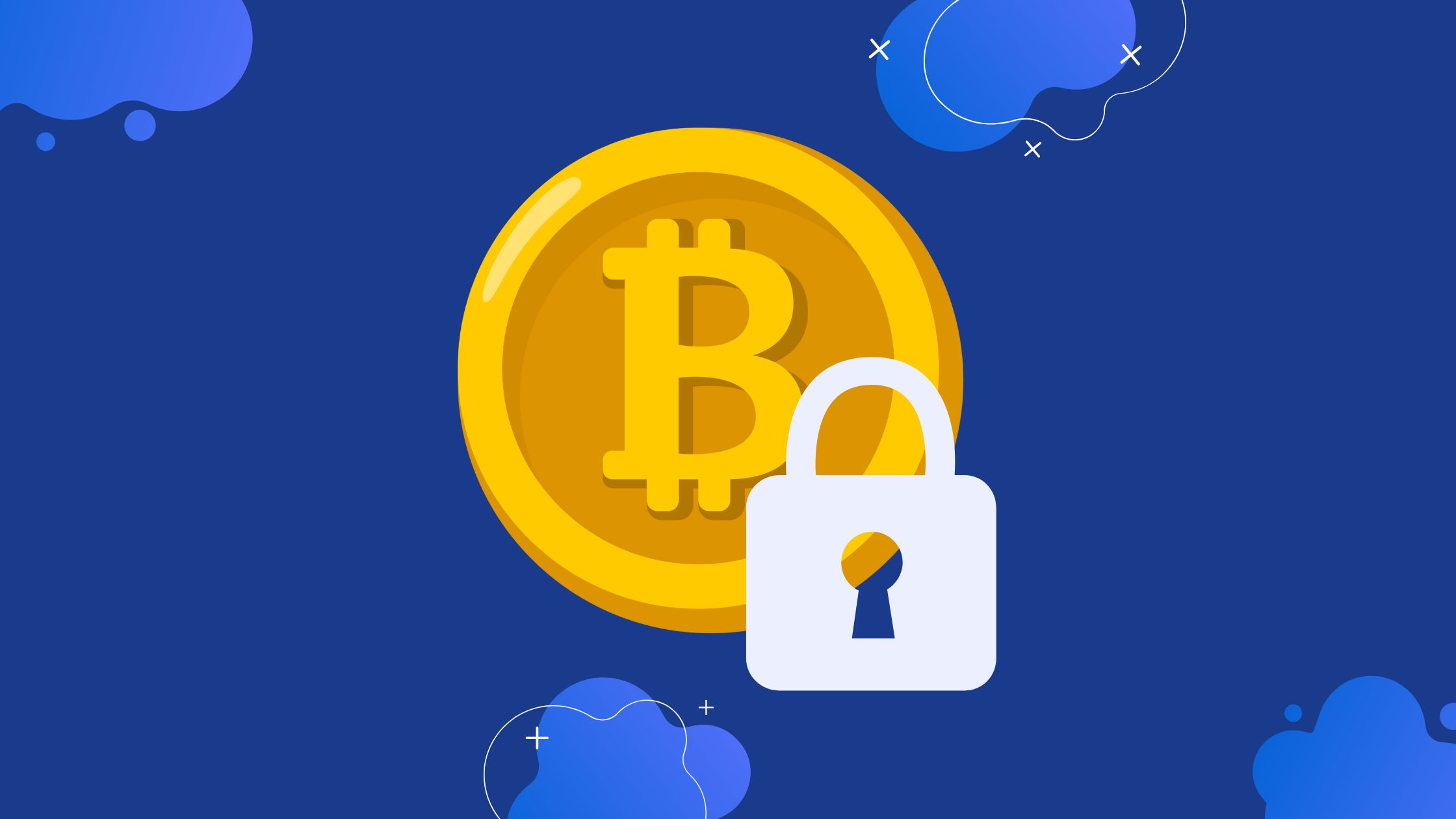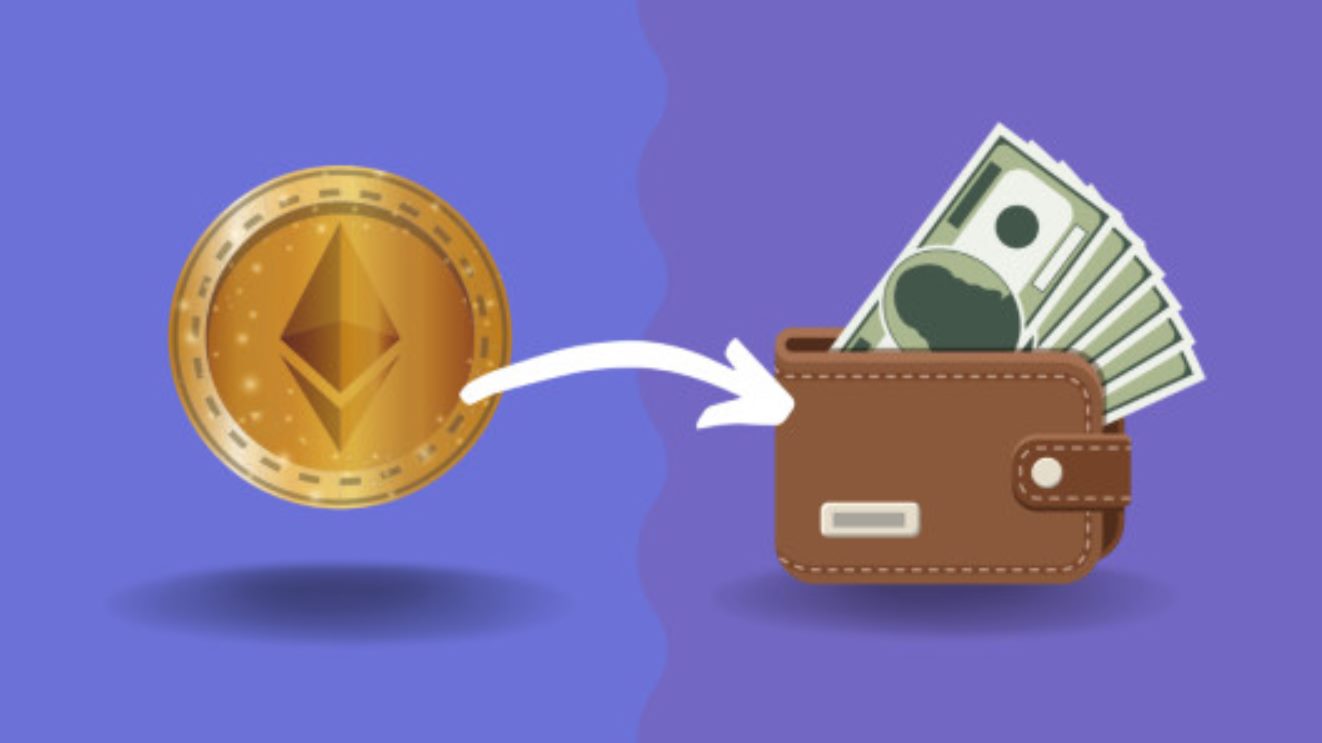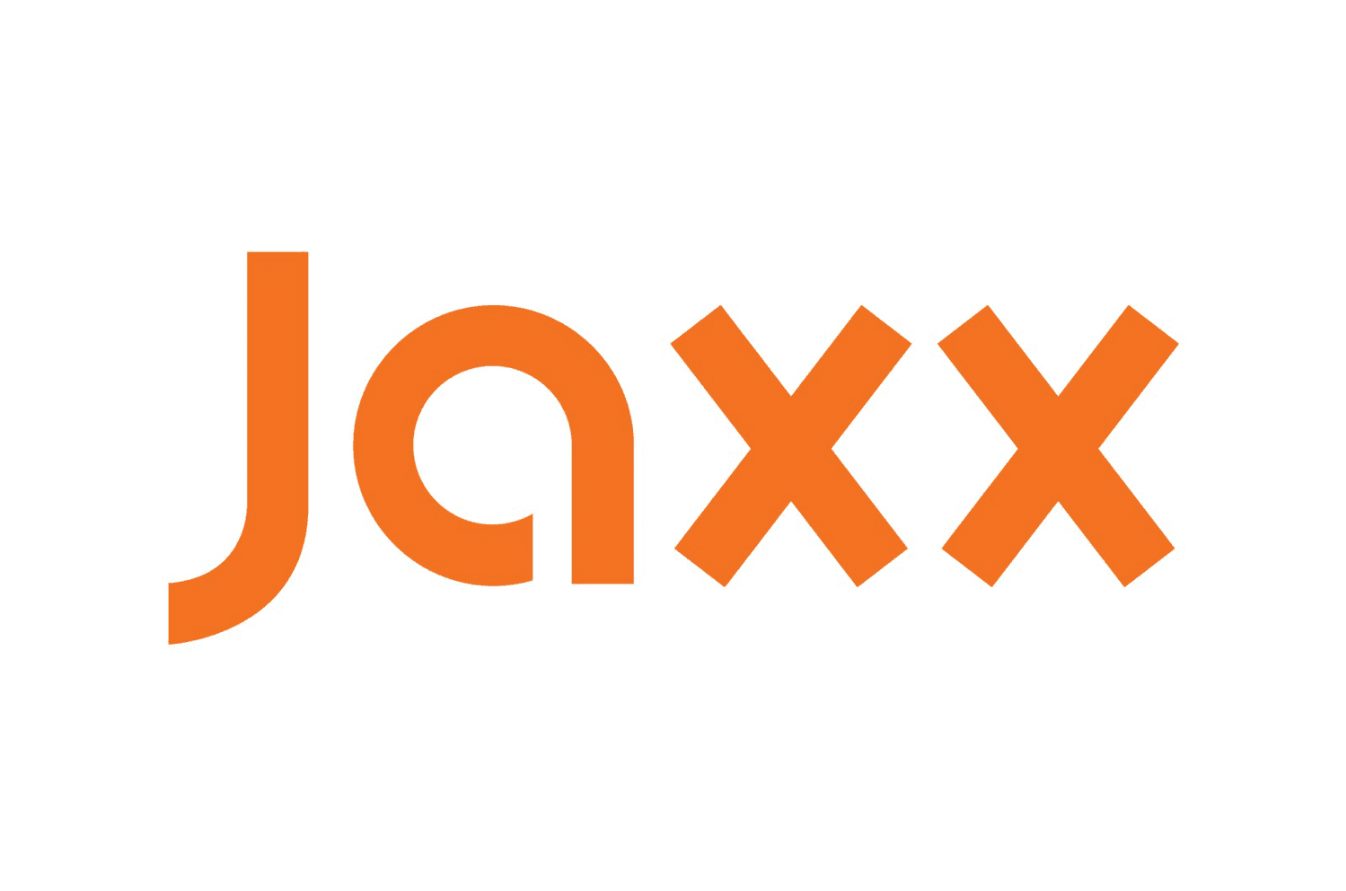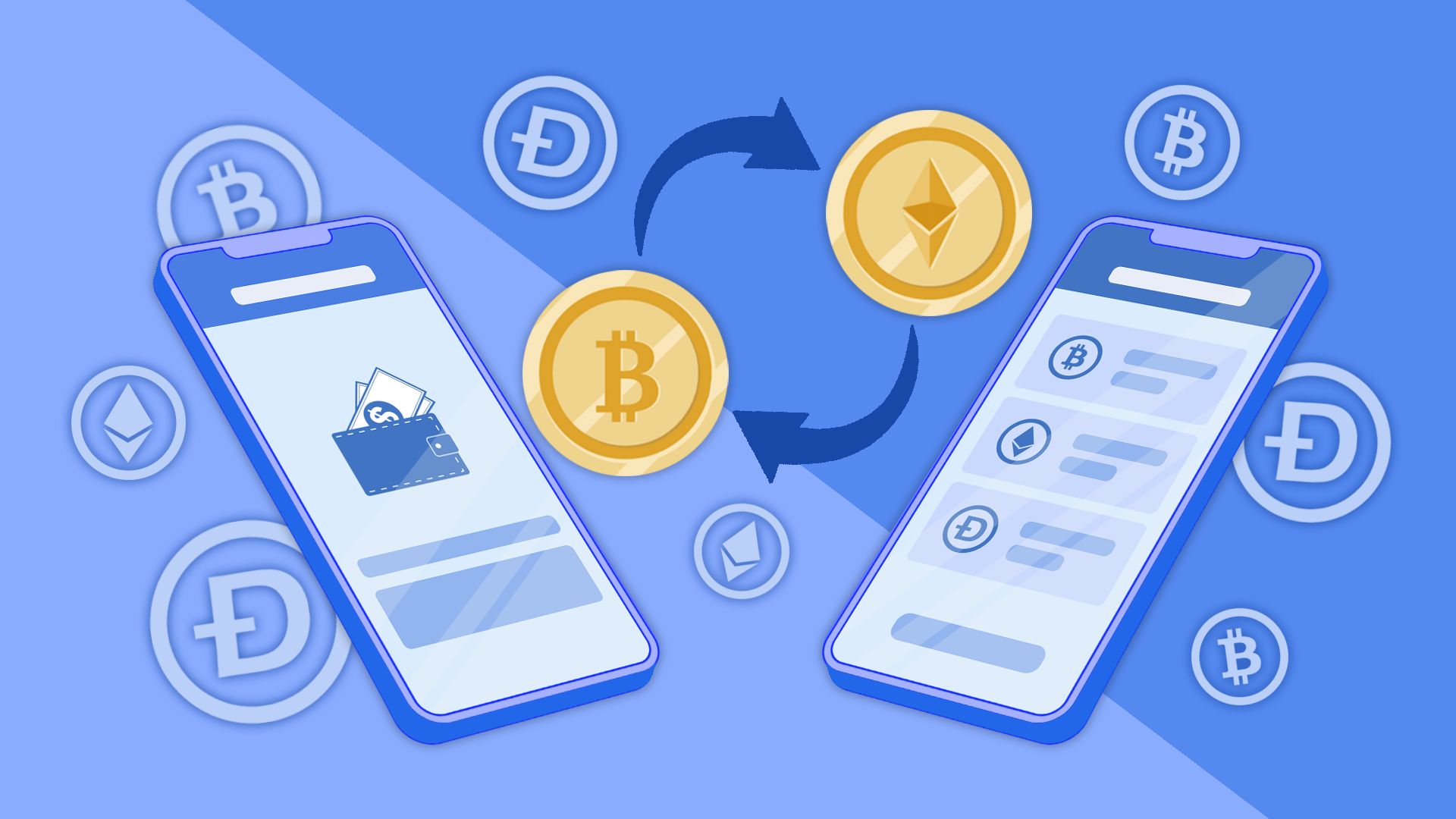Introduction
Welcome to the world of cryptocurrencies! As the popularity of digital currencies continues to rise, so does the need for secure and reliable cryptocurrency wallets. In this article, we will explore what cryptocurrency wallets are, the different types available, and how to create one for yourself.
A cryptocurrency wallet is essentially a digital wallet that allows you to securely store, send, and receive your cryptocurrencies. It acts as a vault for your digital assets, providing you with a unique address for each cryptocurrency you hold. These wallets utilize cryptographic technology to ensure the safety of your funds, making them an essential tool for anyone involved in the world of cryptocurrency.
There are various types of cryptocurrency wallets available, each with its own unique features and levels of security. Online wallets, also known as web wallets, are cloud-based wallets that allow you to access your funds from any device with an internet connection. Mobile wallets, on the other hand, are applications that you can download and install on your smartphone for convenient access to your digital assets on the go.
Desktop wallets are software programs that you install on your computer, offering a higher level of security as they are not vulnerable to online threats. Hardware wallets, often considered the most secure option, are physical devices that store your private keys offline, protecting your funds from potential hacks. Lastly, paper wallets involve printing out your keys and storing them in a physical form, adding an extra layer of security.
Choosing the right cryptocurrency wallet for your needs is essential. Factors to consider include security, accessibility, and ease of use. It’s important to research different wallet providers and compare their features before making a decision. Additionally, considering the type of cryptocurrency you own and the level of control and ownership you desire over your funds can also influence your choice.
In the next sections, we will guide you through the process of creating your own cryptocurrency wallet. Whether you’re a beginner exploring the world of cryptocurrencies or an experienced trader, this guide will provide you with the necessary steps to secure your digital assets effectively.
What is a Cryptocurrency Wallet?
A cryptocurrency wallet is a digital tool that allows individuals to securely store, send, and receive their cryptocurrencies. Unlike traditional wallets that hold physical cash and cards, cryptocurrency wallets are software programs or physical devices that manage your digital assets.
At its core, a cryptocurrency wallet stores the private keys that enable access to your digital currency. Private keys are essentially long strings of characters that serve as the password to your funds. These keys are mathematically linked to your cryptocurrencies and are used to sign transactions, proving ownership and authorizing transfers.
It’s important to understand that cryptocurrencies don’t physically exist in any specific location. Instead, they exist as records on a blockchain, which is a public digital ledger that stores transactions and balances. Cryptocurrency wallets allow you to interact with this blockchain and manage your funds.
There are various types of cryptocurrency wallets available, each with its own unique features and level of security. Online wallets, also known as web wallets, are cloud-based wallets that allow you to access your funds via a website or online service. These wallets provide convenience as they can be accessed from any device with an internet connection. However, they do come with a potential risk of hacking if not properly secured.
Mobile wallets are applications that you can download and install on your smartphone. They offer a convenient way to access your funds on the go and often come with additional features such as QR code scanning for easy transactions. Mobile wallets are typically secure, but it’s crucial to have proper security measures on your device to prevent unauthorized access.
Desktop wallets are software programs that you install on your computer. They provide you with full control over your private keys and allow you to store and manage your cryptocurrencies offline. This added security measure makes desktop wallets less vulnerable to online threats, but it’s important to keep your computer and wallet software up to date.
Hardware wallets, also known as cold wallets, are physical devices specifically designed to store cryptocurrency private keys offline. These hardware devices, such as USB sticks or hardware cards, offer the highest level of security. They keep your private keys completely isolated from internet-connected devices, protecting your funds from potential hacks.
Lastly, paper wallets are a form of cold storage where you generate and print out your private keys on a physical piece of paper. Paper wallets offer an additional layer of security as they are not vulnerable to online attacks. However, it’s important to keep the paper secure and away from potential damage.
In summary, a cryptocurrency wallet is a digital tool that allows individuals to store, send, and receive their cryptocurrencies securely. By managing your private keys and interacting with the blockchain, these wallets enable you to have full control over your digital assets. Choosing the right type of wallet depends on your preferences, needs, and the level of security you desire.
Types of Cryptocurrency Wallets
When it comes to storing your cryptocurrencies, there are several types of wallets available, each with its own unique features and level of security. Understanding the different types can help you choose the most suitable wallet for your needs. Let’s explore the various types of cryptocurrency wallets:
1. Online Wallets: Online wallets, also known as web wallets, are cloud-based wallets that allow you to access your funds through a website or online service. They offer convenience as you can access your cryptocurrencies from any device with an internet connection. However, since online wallets rely on third-party providers, they come with a potential risk of hacking. It’s crucial to choose a reputable and secure online wallet provider to minimize the security risks.
2. Mobile Wallets: Mobile wallets are applications that you can download and install on your smartphone. They offer the convenience of accessing your funds on the go, allowing you to make transactions easily with QR code scanning. Mobile wallets are generally secure, but it’s important to have proper security measures on your device, such as a strong password or biometric authentication, to prevent unauthorized access.
3. Desktop Wallets: Desktop wallets are software programs that you can install on your computer. They offer a higher level of security compared to online and mobile wallets since they are not as vulnerable to online threats. Desktop wallets allow you to store and manage your cryptocurrencies offline, giving you full control over your private keys. However, it’s important to keep your computer and wallet software updated to ensure the security of your funds.
4. Hardware Wallets: Hardware wallets, often considered one of the most secure options, are physical devices designed to store your cryptocurrency private keys offline. These devices, such as USB sticks or hardware cards, keep your private keys completely isolated from internet-connected devices, providing a robust barrier against potential hacks. Hardware wallets offer an extra layer of security and are ideal for individuals holding significant cryptocurrency investments.
5. Paper Wallets: Paper wallets are a form of cold storage where you generate and print out your private keys on a physical piece of paper. They provide an additional layer of security as they are not vulnerable to online attacks. Paper wallets are considered secure as long as you keep the physical paper secure and away from potential damage or loss. However, it’s important to note that paper wallets require careful handling and storage, as losing the paper can lead to the permanent loss of your funds.
Each type of cryptocurrency wallet offers different benefits and considerations. Choosing the right wallet depends on your specific needs, the level of security you require, and your preference for convenience and accessibility. It’s essential to research and choose a reputable wallet provider to ensure the safety of your digital assets.
Online Wallets
Online wallets, also known as web wallets, are cloud-based cryptocurrency wallets that allow you to store, send, and receive your digital assets through a website or online service. They are accessible from any device with an internet connection, making them a convenient option for managing your cryptocurrencies.
One of the key advantages of online wallets is their ease of use. You can simply sign up for an account with a reputable online wallet provider, set up your wallet, and start managing your digital assets right away. There is no need to download or install any software, making it a hassle-free option, especially for beginners.
With an online wallet, your data is stored on the provider’s servers, which means you don’t have to worry about managing the security of your own device or the wallet software. However, it’s important to choose a trustworthy and secure online wallet provider to protect your funds from potential hacking attempts.
While online wallets offer convenience and accessibility, they do come with some security considerations. Since your private keys are stored online, there is a risk of hacking or unauthorized access. It’s crucial to use complex and unique passwords and enable any available two-factor authentication (2FA) options to add an extra layer of security to your wallet.
When selecting an online wallet, it’s essential to research and choose a reputable provider with a track record of security. Look for wallets that offer features like encryption and secure backup, as well as a clear privacy policy to protect your personal information.
Additionally, consider the reputation of the wallet provider within the cryptocurrency community. Look for user reviews and feedback to get a sense of their reliability and customer support. Transparency and open-source technologies can also be indicators of a trustworthy online wallet provider.
Keep in mind that online wallets require you to place trust in the wallet provider to secure your funds. It’s crucial to use strong security practices, such as enabling 2FA, and regularly monitoring your account for any suspicious activity.
In summary, online wallets provide convenience and accessibility for managing your cryptocurrencies. They are easy to set up and can be accessed from any device with an internet connection. However, it’s important to choose a reputable and secure online wallet provider and follow best security practices to protect your digital assets.
Mobile Wallets
Mobile wallets are cryptocurrency wallets that can be downloaded and installed on your smartphone, allowing you to manage your digital assets on the go. With the increasing use of smartphones, mobile wallets have become a popular choice for individuals who want quick and convenient access to their cryptocurrencies.
One of the main advantages of mobile wallets is their portability and accessibility. You can carry your digital assets with you wherever you go, making it easy to make transactions or check your balances at any time. Mobile wallets often come with features like QR code scanning, which allows for seamless transactions with other wallet users.
Mobile wallets generally offer a user-friendly interface that is designed with mobile devices in mind. They provide a simple and intuitive way to send and receive cryptocurrencies, making it suitable for both beginners and experienced users. Additionally, many mobile wallets support multiple cryptocurrencies, allowing you to manage different types of digital assets in one place.
Security is a crucial aspect of mobile wallets. To protect your funds, it’s important to choose a reputable mobile wallet provider and ensure that the wallet application has proper security measures in place. Look for mobile wallets that offer features such as PIN or biometric authentication (such as fingerprint or face recognition) to prevent unauthorized access.
It’s important to note that the security of a mobile wallet also depends on the security practices of your smartphone. Ensure that your device is protected with a strong password or PIN, and keep your mobile operating system and wallet application updated to include the latest security patches.
When selecting a mobile wallet, consider the reputation of the wallet provider within the cryptocurrency community. Look for wallets that have good user reviews, a history of security updates, and an active development team. Regular updates and bug fixes are indicators that the wallet provider is actively working on enhancing the security and functionality of the mobile wallet.
Lastly, it’s important to be cautious of potential risks associated with mobile wallets. Since smartphones are connected to the internet, there is a possibility of malware or phishing attacks. Only download your mobile wallet from official sources, such as reputable app stores, to minimize the risk of downloading a malicious app.
Overall, mobile wallets provide a convenient way to manage your cryptocurrencies on the go. They are easy to use, portable, and offer features like QR code scanning for seamless transactions. However, it’s crucial to choose a reputable wallet provider, practice good security habits, and keep your smartphone protected to ensure the safety of your digital assets.
Desktop Wallets
Desktop wallets are software programs that you can install on your computer to store, manage, and secure your cryptocurrencies. These wallets provide individuals with full control over their digital assets and are a popular choice for those seeking enhanced security.
One of the primary advantages of desktop wallets is their offline storage capability. Since the wallet software resides on your computer, your private keys and digital assets are stored locally, making them less susceptible to online threats. This added layer of security can give you peace of mind, knowing that your funds are not accessible to potential hackers.
Desktop wallets offer a range of features that cater to different user preferences. Some wallets provide a full node implementation, where the wallet software downloads the entire blockchain onto your computer. This allows for increased privacy and validation of transactions without relying on external servers. Other wallets, known as lightweight wallets, do not require the full blockchain download but still offer secure ways to manage your cryptocurrencies.
Another advantage of desktop wallets is the ability to create multiple addresses for different cryptocurrencies within the same wallet. This makes it easy to organize and manage your various digital assets in one place. Additionally, desktop wallets often have backup and recovery options, allowing you to restore your wallet if your computer is lost or damaged.
While desktop wallets offer robust security and control, it’s essential to take precautions to protect your funds. Regularly update both your computer’s operating system and the wallet software to ensure you have the latest security patches. Use strong and unique passwords for your wallet, and consider enabling additional authentication measures such as two-factor authentication (2FA) for added security.
When selecting a desktop wallet, it’s essential to choose a reputable provider with a history of security updates and a well-established presence within the cryptocurrency community. Look for wallets that have active development teams and a strong reputation for user support. User feedback and reviews can provide valuable insights into the reliability and security of a desktop wallet.
It’s worth noting that desktop wallets can require more technical knowledge compared to online or mobile wallets. Users must be familiar with downloading and installing software and taking responsibility for their wallet’s security. It’s important to regularly backup your wallet, either by encrypting and storing a backup file locally or by using offline storage options, such as external hard drives or encrypted USB drives.
In summary, desktop wallets offer enhanced security and control over your cryptocurrencies. They provide offline storage, allowing you to store your private keys locally on your computer. However, it’s important to keep your computer and wallet software up to date, practice good security habits, and choose a reputable desktop wallet provider to ensure the safety of your digital assets.
Hardware Wallets
Hardware wallets are physical devices specifically designed to store and secure your cryptocurrencies offline. They provide the highest level of security for your digital assets and are widely regarded as one of the safest ways to store cryptocurrencies.
One of the key advantages of hardware wallets is their ability to keep your private keys completely offline. These devices generate and store your private keys within the physical hardware, ensuring that they are not exposed to potential online threats. This offline storage feature significantly reduces the risk of hacking or unauthorized access to your funds.
Hardware wallets are designed to be user-friendly, often featuring a small screen and buttons for easy navigation. They offer a secure way to sign transactions and manage your cryptocurrencies without exposing your private keys to potentially compromised devices or networks. Some hardware wallets also provide additional security features, such as PIN codes or passphrase encryption, to further protect your funds.
Another advantage of hardware wallets is their compatibility with various cryptocurrencies. They support a wide range of digital assets, allowing you to manage different types of cryptocurrencies within a single device. This eliminates the need for multiple wallets and simplifies the management of your portfolio.
Setting up a hardware wallet typically involves initializing the device, creating a backup of your wallet’s recovery phrase, and securing it in a safe place. This recovery phrase is used to restore your wallet in case the device is lost, stolen, or damaged. It’s essential to follow the manufacturer’s instructions carefully during the setup process to ensure your wallet is properly configured and your funds remain secure.
When selecting a hardware wallet, it’s important to choose a reputable and trusted manufacturer. Research and consider factors such as the wallet’s security track record, user reviews, and the community’s acceptance of the device. Look for wallets that have undergone independent security audits and have a strong reputation for their commitment to user privacy and data protection.
While hardware wallets provide excellent security, they can come with a higher price tag compared to other types of wallets. This cost is justified by the robust security measures and peace of mind they offer. It’s important to consider your budget and weigh the potential benefits of using a hardware wallet for the long-term protection of your cryptocurrencies.
In summary, hardware wallets offer the highest level of security for storing cryptocurrencies. They keep your private keys offline, providing a safe and secure method for managing your digital assets. However, it’s crucial to choose a reputable hardware wallet manufacturer, carefully follow the setup instructions, and secure your wallet’s recovery phrase to ensure the safety and accessibility of your funds.
Paper Wallets
Paper wallets are a form of cold storage that allows you to store your cryptocurrency private keys offline on a physical piece of paper. They offer an additional layer of security by keeping your digital assets completely disconnected from the internet.
To create a paper wallet, you generate a new pair of public and private keys using a trusted offline generator or wallet software. The private key is then printed out or written down on a piece of paper and stored in a secure location. Meanwhile, the public key is used to receive funds into the wallet. It’s important to note that paper wallets often include a QR code representation of the public and private keys for easy scanning.
One of the main advantages of paper wallets is that they are not vulnerable to online attacks, as they are stored offline. This significantly reduces the risk of hacking or unauthorized access to your funds. Paper wallets offer a physical, tangible representation of your digital assets, providing peace of mind for those who prefer a more tangible form of cryptocurrency storage.
Paper wallets are also relatively easy to create and use. As long as you can safely generate and store the private keys, you can create a paper wallet for your cryptocurrencies. Additionally, paper wallets are compatible with any cryptocurrency that uses public-private key pairs, making them a versatile option for storing various digital assets.
However, paper wallets come with their own set of considerations and risks. One of the main risks is physical damage or loss of the paper wallet. Paper can be easily damaged, degraded by environmental factors, or lost. It’s important to keep your paper wallet in a secure and protected location, such as a fireproof safe or a safety deposit box.
An additional risk is the potential for human error during the creation and usage of paper wallets. Accidentally exposing the private key or losing the paper wallet can result in permanent loss of access to your funds. It’s crucial to be diligent during the creation process and ensure that you have multiple backups of your paper wallet in secure locations.
When creating a paper wallet, it’s recommended to use a trusted offline generator or wallet software. These tools should come from reputable sources to avoid any potential tampering with the generated keys. It’s important to verify the authenticity of the generator and review the software’s code if it’s open-source.
In summary, paper wallets provide an offline and tangible way to store your cryptocurrency private keys securely. They offer an additional layer of protection by keeping your digital assets completely disconnected from the internet. However, it’s crucial to consider the risks associated with physical damage, loss, and human error when creating and using paper wallets. By following best practices and storing your paper wallet in a secure location, you can enjoy the added security and peace of mind that paper wallets provide.
How to Choose the Right Wallet for You
Choosing the right cryptocurrency wallet is crucial to ensure the security and accessibility of your digital assets. With various wallet options available, it’s important to consider several factors when determining which wallet is best suited for your needs. Here are some essential considerations to help you choose the right wallet:
1. Security: Security should be a top priority when selecting a cryptocurrency wallet. Look for wallets that offer robust security features, such as encryption, two-factor authentication (2FA), and secure backup options. Consider whether you prefer offline storage options, like hardware or paper wallets, or if you’re comfortable with the security measures provided by online or mobile wallets.
2. User-Friendliness: Consider your level of technical expertise and choose a wallet that matches your comfort level. Some wallets may have more advanced features, which can be overwhelming for beginners. Look for wallets with a user-friendly interface and straightforward setup process to ensure a smooth user experience.
3. Compatibility: Check whether the wallet supports the cryptocurrencies you own or plan to hold in the future. Some wallets are designed to support a wide range of digital assets, while others may be limited to specific cryptocurrencies. Ensure that the wallet you choose is compatible with your desired digital assets.
4. Accessibility: Determine how and where you plan to access your wallet. Online and mobile wallets offer convenient accessibility from any internet-connected device, while desktop wallets provide offline control from your personal computer. Hardware and paper wallets require physical access to the device or paper to manage your funds.
5. Reputation and Support: Research the reputation and track record of the wallet provider. Look for wallets with positive user reviews, a history of security updates, and active development communities. Consider the level of customer support available, as it can be crucial if you encounter any issues with the wallet.
6. Backup and Recovery: Look for wallets that offer backup and recovery options. Regularly backing up your wallet is essential to prevent the loss of your funds in case of device failure or loss. Ensure that the wallet provides clear instructions on how to backup and restore your wallet securely.
7. Community Trust: Consider the reputation and acceptance of the wallet within the cryptocurrency community. Look for wallets that have undergone independent security audits or have a strong community backing. Feedback from other users and the overall sentiment towards the wallet can help gauge its reliability and trustworthiness.
By considering these factors in your decision-making process, you can choose a wallet that aligns with your security preferences, technical proficiency, and the specific needs of your cryptocurrency holdings. Remember, it’s crucial to review and revisit your choice over time as wallet technology and security practices continue to evolve.
Step-by-Step Guide to Creating a Cryptocurrency Wallet
Creating a cryptocurrency wallet is an essential first step towards securely managing your digital assets. Whether you’re a beginner or an experienced user, this step-by-step guide will walk you through the process of creating your own cryptocurrency wallet:
Step 1: Research Different Wallet Providers: Start by researching and exploring various wallet providers. Look for reputable and secure options that align with your specific needs and preferences. Consider factors such as security features, user-friendliness, compatibility with your desired cryptocurrencies, and positive user reviews.
Step 2: Choose a Wallet Provider: Once you’ve conducted thorough research, select a wallet provider that best meets your requirements. Visit their website and review their offerings, as well as any user guides or documentation provided. Ensure that the wallet is legitimate and trustworthy before proceeding.
Step 3: Download the Wallet Application: If you have chosen a software-based wallet, visit the wallet provider’s website or app store to download the application onto your device. Follow the instructions provided by the wallet provider to ensure a successful installation.
Step 4: Set up Your Wallet: Open the wallet application and follow the setup process. This typically involves creating a new wallet or importing an existing one using a recovery phrase or private key. Follow the instructions provided by the wallet provider to complete the setup process accurately.
Step 5: Secure Your Wallet with Two-Factor Authentication (2FA): Enable two-factor authentication (2FA) if the wallet supports it. 2FA adds an extra layer of security by requiring a second verification step, such as a unique code, in addition to your password. This helps protect your wallet from unauthorized access.
Step 6: Create a Backup of Your Wallet: It’s crucial to create a backup of your wallet to safeguard your funds in case of wallet loss, device failure, or other unforeseen circumstances. Follow the wallet provider’s instructions on how to back up your wallet securely. This often involves writing down a recovery phrase and storing it in a safe and confidential location.
Step 7: Test Your Wallet: Before depositing any significant amount of funds, it’s advisable to test your wallet with a small transaction. Send a small amount of cryptocurrency to your wallet address and ensure that the transaction is successfully received. This step helps you gain confidence in using your wallet and ensures its functionality.
By following these step-by-step instructions, you can create your own cryptocurrency wallet and take control of your digital assets. Remember to stay informed about the latest security practices and regularly update your wallet software to ensure the safety of your funds.
Step 1: Research Different Wallet Providers
When embarking on the journey to create a cryptocurrency wallet, the first step is conducting thorough research on different wallet providers. This step is crucial as it helps you identify reputable and secure options that align with your specific needs and preferences. Here’s how to effectively research different wallet providers:
1. Understand Your Requirements: Start by clarifying your requirements and priorities. Consider factors such as the level of security you require, the types of cryptocurrencies you want to store, and the level of control and ownership you desire over your funds. This will help you narrow down your search and find wallet providers that meet your specific criteria.
2. Seek Recommendations: Reach out to trusted friends, fellow cryptocurrency enthusiasts, or online communities for wallet provider recommendations. Valuable insights and experiences from others can help you narrow down your choices and identify potential wallet providers worth exploring further.
3. Read Reviews and Feedback: Look for reviews and feedback from current and past users of the wallet providers you’re interested in. User reviews can provide valuable insights into user experiences, security features, ease of use, customer support, and overall satisfaction. Consider both positive and negative reviews to gain a balanced perspective.
4. Consider Security Measures: Security should be a top priority when selecting a wallet provider. Look for information on the security measures implemented by each provider. This includes features such as encryption of sensitive data, two-factor authentication (2FA), or multi-signature technology. Ensure that the wallet provider has a track record of maintaining high-security standards and protecting users’ funds.
5. Evaluate User-Friendliness: Assess the user-friendliness of a wallet provider’s interface and overall user experience. Consider the ease of setting up a wallet, navigating through the features, and executing transactions. A user-friendly wallet can help streamline your cryptocurrency management experience, especially if you are a beginner.
6. Check Compatibility: Ensure that the wallet provider supports the cryptocurrencies you own or plan to hold in the future. Look for wallet providers that offer compatibility with a wide range of digital assets. This will allow for greater flexibility and convenience in managing your portfolio.
7. Explore Wallet Provider’s Reputation: Consider the reputation and credibility of each wallet provider. Look for established providers with a history of successful operations. Check if they have undergone independent security audits or are supported by respected members of the cryptocurrency community. Wallet providers with transparent operations and active development communities tend to be more reliable choices.
8. Customer Support Availability: Look for information about the wallet provider’s customer support options. Check if they offer multiple support channels such as email, live chat, or a dedicated support forum. Good customer support can be crucial if you encounter any issues with your wallet or need assistance in managing your digital assets.
By thoroughly researching different wallet providers and considering these key factors, you can make an informed decision about which wallet providers align best with your cryptocurrency storage and management needs. Remember, the security and reliability of your chosen wallet provider can significantly impact the safety and accessibility of your digital assets.
Step 2: Choose a Wallet Provider
After conducting thorough research on different wallet providers, the next step is to choose a wallet provider that best meets your cryptocurrency storage and management needs. This step is crucial as it sets the foundation for the security, accessibility, and convenience of your cryptocurrency wallet. Here are some key considerations to help you choose the right wallet provider:
1. Security: Prioritize the security features and practices of the wallet provider. Look for providers that implement robust security measures such as encryption, two-factor authentication (2FA), or multi-signature technology. Consider the wallet provider’s track record in protecting user funds and their responsiveness to security vulnerabilities.
2. Reputation: Consider the reputation and credibility of the wallet provider. Look for wallets that have a solid reputation within the cryptocurrency community. Check if they have a history of trustworthy operations, positive user experiences, and a transparent approach to security and privacy measures. Independent audits or endorsements from reputable sources can also be indicators of a reliable wallet provider.
3. Wallet Type: Determine the type of wallet that suits your needs. Choose between online wallets, mobile wallets, hardware wallets, desktop wallets, or paper wallets based on your preferences for security, accessibility, and convenience. Each wallet type has its pros and cons, so evaluate the trade-offs and choose the one that aligns with your requirements.
4. Compatibility: Ensure that the wallet provider supports the specific cryptocurrencies you own or intend to hold. Some wallet providers may be more versatile and offer compatibility with a wide range of digital assets, while others may have limitations on supported cryptocurrencies. Check the wallet provider’s website or documentation to confirm their compatibility with your desired cryptocurrencies.
5. User Experience: Evaluate the user experience and ease of use offered by the wallet provider. Consider factors such as the simplicity of the wallet’s interface, the intuitiveness of its navigation, and the clarity of instructions provided. A user-friendly wallet can greatly enhance your experience and make managing your digital assets more efficient.
6. Development and Support: Look for wallet providers with active development teams and ongoing updates. Regular updates indicate that the wallet provider is actively maintaining and improving security features and functionality. Additionally, check the wallet provider’s customer support options to ensure they offer responsive and reliable assistance in case of any issues.
7. Backup and Recovery: Consider the backup and recovery options provided by the wallet provider. It’s essential to have a plan for securely backing up your wallet in case of device loss or failure. Check if the wallet provider offers clear instructions on how to backup and recover your wallet, whether through a recovery phrase, private key, or other methods.
8. Community Feedback: Take into account user feedback and reviews from the community. User experiences can provide insights into the wallet provider’s performance, reliability, and customer support. Pay attention to both positive and negative reviews to understand the strengths and weaknesses of the wallet provider.
By considering these factors and making an informed decision, you’ll be on your way to choosing a wallet provider that aligns with your cryptocurrency storage and management requirements. Remember, the wallet provider plays a critical role in the security and accessibility of your digital assets, so choose wisely to ensure the protection of your funds.
Step 3: Download the Wallet Application
Once you have selected a wallet provider that meets your needs, the next step is to download the wallet application onto your device. This step is essential as it allows you to access and manage your cryptocurrency wallet securely. Follow these guidelines to successfully download the wallet application:
1. Visit the Official Website: Go to the official website of the wallet provider. Ensure that you are on the official website to avoid downloading fraudulent or malicious software. Look for clear indications that you are on the correct website, such as a secure URL (https) and verified links or logos.
2. Locate the Download Section: Once on the wallet provider’s website, navigate to the download section. This area typically provides the necessary resources and links to download the official wallet application. Look for the appropriate version of the wallet application that matches your device’s operating system (e.g., Windows, Mac, Linux, iOS, Android).
3. Verify Authenticity and Security: Before initiating the download, verify the authenticity and security of the wallet application. Check if the wallet provider has documented and verifiable information regarding the authenticity of their software. This could include digital signatures, checksums, or verification steps provided on their website.
4. Read the Release Notes: Take time to read the release notes or updates associated with the wallet application. This will give you insights into the latest features, bug fixes, or security enhancements that have been implemented. Stay informed about any important considerations or recommendations from the wallet provider.
5. Download the Wallet Application: Click on the appropriate download link for your device’s operating system. This will initiate the download process. Depending on your device and browser settings, you may be asked to confirm the download or choose a location to save the downloaded file. Follow the prompts to complete the download process.
6. Install the Wallet Application: Once the wallet application has been successfully downloaded onto your device, locate the downloaded file and run the installer. Follow the installation prompts and instructions provided by the wallet application setup wizard. Pay attention to any customization options or recommendations made during the installation process.
7. Run the Wallet Application: After the installation is complete, locate and open the wallet application. It may appear as an icon on your desktop or in your applications folder. Launch the wallet application and wait for it to initialize and load. Follow any on-screen prompts or setup steps required to configure your wallet.
8. Set Up Your Wallet: Follow the specific instructions provided by the wallet application to set up your wallet. This may include creating a new wallet, importing an existing wallet using a recovery phrase or private key, setting a password, or configuring security features. Take your time and carefully follow each step to ensure your wallet is properly set up and ready to use.
By following these steps, you can successfully download the wallet application from the official website of your chosen wallet provider. Once installed and set up, your wallet application will provide you with a secure environment to manage your digital assets and conduct transactions.
Step 4: Set up Your Wallet
After downloading the wallet application, the next step is to set up your cryptocurrency wallet. This process involves configuring your wallet settings, generating your wallet’s unique addresses, and securing your private keys. Here’s how to effectively set up your wallet:
1. Launch the Wallet Application: Open the wallet application you downloaded and installed on your device. Depending on the wallet, you may be prompted to agree to terms and conditions or set a password before proceeding.
2. Create a New Wallet or Import an Existing Wallet: Follow the instructions provided by the wallet application to either create a new wallet or import an existing one. If you are creating a new wallet, you’ll typically be guided through the process of generating a new wallet address and private keys. If you are importing an existing wallet, follow the instructions to enter your recovery phrase or import your private keys.
3. Establish a Secure Password: Set a strong and unique password for your wallet. Make sure it is complex, using a combination of upper and lower case letters, numbers, and symbols. This password will help protect your wallet and prevent unauthorized access to your funds. Avoid using common or easily guessable passwords.
4. Review and Record Your Recovery Phrase: Many wallets generate a recovery phrase, also known as a seed phrase, which is a sequence of words that can be used to restore your wallet in case of loss or damage. It’s crucial to write down this recovery phrase and keep it in a safe and confidential location. Ensure you back up this recovery phrase in a secure manner, such as by writing it down on paper or using a secure digital storage solution.
5. Store Your Private Keys Securely: Private keys are essential for accessing and managing your digital assets. Ensure that your wallet application provides you with access to your private keys. Keep them secure, preferably offline, and away from potential threats. Additionally, consider using hardware wallets or encrypted storage devices for enhanced security.
6. Enable Additional Security Features: Explore and activate any additional security features offered by your wallet application. This may include two-factor authentication (2FA) or biometric authentication (such as fingerprint or face recognition), which provide an extra layer of protection for accessing your wallet.
7. Familiarize Yourself with Wallet Functionality: Take the time to familiarize yourself with the various functions and features of your wallet. Learn how to receive and send funds, check your transaction history, and explore any additional features provided by the wallet application. This will help you make the most of your wallet’s capabilities.
8. Regularly Update and Monitor Your Wallet: Stay vigilant by keeping your wallet application up to date with the latest software versions and security patches. Regularly monitor your wallet for any suspicious activity and be cautious of phishing attempts or fraudulent websites that try to mimic your wallet’s interface. Practicing good security habits will help protect your digital assets from potential threats.
By following these steps, you can set up your cryptocurrency wallet effectively and ensure the proper security and functionality of your wallet. Taking the time to configure and secure your wallet will provide you with peace of mind as you store and manage your digital assets.
Step 5: Secure Your Wallet with Two-Factor Authentication
Once you have set up your cryptocurrency wallet, it’s important to enhance its security by enabling two-factor authentication (2FA). Two-factor authentication adds an extra layer of protection to your wallet, making it significantly more difficult for unauthorized individuals to access your funds. Follow these steps to secure your wallet with 2FA:
1. Understand Two-Factor Authentication (2FA): Familiarize yourself with the concept of 2FA. It is a security measure that requires you to provide two types of identification to gain access to your wallet. In addition to your password (the first factor), a second factor is needed, typically a one-time code generated by an authentication app or sent to your mobile device.
2. Choose an Authentication App: Select a reputable authentication app that supports 2FA, such as Google Authenticator, Authy, or LastPass Authenticator. Download and install the app onto your smartphone or other authorized device from your app store.
3. Enable Two-Factor Authentication in Your Wallet: Open your wallet application and navigate to the security settings. Look for the option to enable two-factor authentication. Select the 2FA option and follow the instructions provided by the wallet application.
4. Scan the QR Code: In your wallet application, a unique QR code will be generated. Use the authentication app on your smartphone to scan the QR code. This will establish a connection between the wallet and the app.
5. Obtain the Authenticator Code: After scanning the QR code, the authentication app will display a one-time code. This code will refresh periodically, typically every 30 seconds. Note that your app may allow manual entry of the secret key in case QR code scanning is not possible.
6. Authenticate Your Wallet: Enter the one-time code from the authentication app into the specified field provided by your wallet application. This verifies the connection between your wallet and the app. Once authenticated, your wallet will be secured with two-factor authentication.
7. Regularly Generate New Backup Codes: Some wallet applications may provide backup codes as an additional safeguard in case you lose access to your authentication app. Generate and save these backup codes securely. Treat these codes as you would your wallet’s private keys—store them in an encrypted format or offline in a secure location.
8. Maintain Secure Access to Your Authentication App: Protect your smartphone or device that holds the authentication app with a strong password, PIN, or biometric authentication. Regularly update your device’s operating system and the authentication app to benefit from the latest security patches and enhancements.
By enabling two-factor authentication, you significantly enhance the security of your cryptocurrency wallet. It provides an additional layer of protection against unauthorized access, safeguarding your funds and preventing potential breaches. Regularly monitor your wallet and authentication app to ensure their continued functionality and security.
Step 6: Create a Backup of Your Wallet
Creating a backup of your cryptocurrency wallet is a crucial step to ensure the safety and accessibility of your digital assets. It provides you with a failsafe in case of device loss, damage, or accidental deletion. Follow these steps to create a backup of your wallet:
1. Understand the Importance of Wallet Backups: Recognize the significance of backing up your wallet. Without a backup, losing access to your device or wallet data could result in permanent loss of your funds. Creating a backup ensures that you can restore your wallet and regain access to your digital assets.
2. Follow the Wallet Provider’s Guidelines: Every wallet has its own backup process, so it’s important to follow the specific guidelines provided by your wallet provider. These instructions will direct you on how to create a backup securely.
3. Backup Options: Most wallets will give you two common backup options. The first is a recovery phrase (also called a seed phrase) consisting of several words. Write down this recovery phrase in the exact order provided, as it is used to restore your wallet. The second option may involve saving your wallet’s private key or keystore file. Ensure that the private key or keystore file is securely stored and encrypted, protected from unauthorized access.
4. Test the Backup: After you have created your backup, it’s crucial to test its effectiveness. Use this opportunity to practice restoring your wallet using the backup. By doing so, you can gain confidence in your ability to recover your funds should the need arise.
5. Store the Backup Securely: Treat your wallet backup with the same level of security as you would your wallet’s private keys. Store physical backups, such as written recovery phrases or printed private keys, in a secure and confidential location, such as a safe deposit box or a home safe. If storing a digital backup, encrypt the file and keep it in multiple secure locations, such as encrypted USB drives or cloud storage with strong security measures.
6. Update Backups Regularly: As you continue to use your wallet and add new funds, make sure to update your backups regularly. Whenever you generate new addresses or receive new cryptocurrencies, create a new backup to capture these changes. This ensures that your backup remains up to date and reflects the current state of your wallet.
7. Keep Multiple Copies: To increase the security of your backups, keep multiple copies in different locations. This ensures that if one copy becomes inaccessible or gets damaged, you will still have other backups available for recovery.
8. Secure Digital Backups: If storing backups digitally, take precautions to protect them. Use strong encryption and passwords to secure the digital files. Regularly update your antivirus software and keep your operating system and applications up to date to defend against potential cyber threats.
Creating a backup of your cryptocurrency wallet is an essential step in protecting your digital assets. By following these steps and maintaining copies of your backups, you can ensure that your funds remain safe and accessible, even in the event of unforeseen circumstances.
Step 7: Test Your Wallet
Once you have set up and secured your cryptocurrency wallet, it is essential to test its functionality to ensure that it is working properly. Testing your wallet ensures that you can send and receive funds effectively, giving you confidence in the reliability of your wallet. Here are the steps to test your cryptocurrency wallet:
1. Prepare Test Funds: To conduct a successful test, you will need a small amount of test funds. These can be obtained from various sources, such as cryptocurrency faucets or test networks specific to the cryptocurrency you are using. Make sure to obtain and use test funds rather than using your actual funds.
2. Confirm Wallet Balance: Check your wallet’s balance to ensure it reflects accurately. Confirm that the test funds have been successfully credited to your wallet by checking the transaction history or balance displayed in your wallet application.
3. Send a Test Transaction: Initiate a test transaction by sending a small amount of test funds to another wallet address. Use the appropriate fields or functionality in your wallet application to specify the recipient’s wallet address and the amount to be sent.
4. Verify Transaction Confirmation: After initiating the test transaction, monitor the confirmation process. Verify that the transaction appears in the blockchain explorer or the transaction history within your wallet application. Confirm that the transaction is successfully confirmed within a reasonable amount of time.
5. Check Receiver’s Wallet: Validate that the test funds are received correctly in the recipient’s wallet. Ensure that the intended wallet address corresponds to the recipient and that the correct balance of test funds is reflected in their wallet application.
6. Monitor Transaction Status: Track the progress of the test transaction until it is confirmed in the blockchain. Confirm that there are no issues, delays, or errors that may affect the transaction’s successful completion.
7. Evaluate Transaction Fees and Speed: Take note of the transaction fees incurred during the test transaction. Evaluate the speed at which the funds were transferred to ensure that it aligns with your expectations and requirements.
8. Repeat Test Steps if Necessary: If any issues or discrepancies are identified during the test, repeat the test steps to investigate the problem further. This will help ensure that your wallet is functioning correctly and that any issues are resolved before conducting actual transactions.
By testing your wallet’s functionality and ensuring that transactions are successfully sent and received, you can gain confidence in the reliability and performance of your cryptocurrency wallet. This step serves as a crucial checkpoint before using your wallet for any significant transfers and helps you understand its capabilities and potential limitations.
Conclusion
Creating a cryptocurrency wallet is an important step in entering the world of digital assets. By following the step-by-step guide outlined in this article, you can establish a secure and reliable wallet to store, send, and receive your cryptocurrencies.
Throughout the process, researching different wallet providers allows you to make an informed decision based on factors such as security features, user-friendliness, compatibility, and reputation. Choosing the right wallet provider sets the foundation for a safe and user-friendly experience.
Downloading and installing the wallet application provides you with access to your wallet on your chosen device. Setting up your wallet involves configuring its settings, generating unique addresses, protecting your private keys, and enabling essential security features such as two-factor authentication (2FA).
Creating a backup of your wallet is essential to safeguard your funds. This backup can be in the form of a recovery phrase, private key, or keystore file. Storing the backup securely and regularly updating it ensures that you can restore your wallet and regain access to your digital assets if needed.
Securing your wallet with two-factor authentication further enhances its security. Utilizing an authentication app and enabling 2FA adds an extra layer of protection, making it more challenging for unauthorized individuals to access your wallet.
Testing your wallet’s functionality is crucial to ensure that it works as intended. Conducting test transactions, verifying balances, and monitoring transaction confirmations allows you to gain confidence in your wallet’s reliability and performance.
Remember to keep your wallet software and device up to date, practice good security habits, and exercise caution to mitigate potential risks. Continuously educate yourself about cryptocurrency wallet best practices to stay informed about the latest security measures.
By following these steps and adopting a proactive approach to wallet security and management, you can protect your digital assets and navigate the world of cryptocurrencies with confidence.







